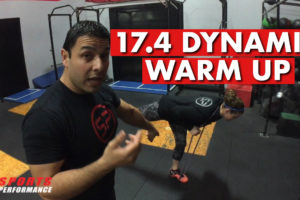
It’s important to have a general knowledge of the various processes our bodies use during exercise and which ones we should focus on to get the best results. Whether, you are looking to build strength, gain endurance, lose weight, or just looking to start exercising more, you can use your own physiology to your advantage with a few simple strategies.
There are three main energy systems at work that typically coexist and work together to drive your everyday activities but during exercise, you will likely tap into one or two that are working a little more depending on the type of activity. For the sake of simplicity and my enjoyment, I’ll be using cars to describe each one!
The Ferrari
The Creatine phosphate/Phosphagen/ATP-PC system is the first to kick in as it relies on ATP(muscle food) that is Immediately available for use. I compare it to the Ferrari because this system initiates your movement and is capable of powering peak or near peak power in a small amount of time; some might say 0-100. However, like the Ferrari, the phosphagen system is built for speed, not distance and will likely run out of gas between 10-30 seconds of work. This will force the transition to a slower, more efficient system.
The Diesel
The glycolytic system takes over and keeping with the analogy, acts as a powerhouse that can sustain high levels of sub-maximal efforts for 30s-3 minutes. Imagine, the Super-duty, Duramax, built tough, gas guzzler, tugging it’s way up hill and pulling a trailer full of horses (sorry, just picturing the commercials). The Glycolytic system will allow for hard work for longer than the Ferrari but won’t be able to match that top speed because it relies on the breakdown and conversion of glycogen (stored carbohydrates) to ATP which takes time and energy to sustain. Like the Diesel, the harder you push this system, the faster you will deplete that fuel supply.
The Prius
Finally, the most efficient Oxidative system takes the wheel and can sustain low-to moderate activity for long periods of time because unlike the glycolytic (sometimes called Anaerobic Glycolysis), this system uses carbohydrates, fats, and proteins which are all converted to usable energy with the help of available oxygen. Although, you won’t match the peak speed and power of the Phosphagen system or the sustained power production of the glycolytic, the oxidative system can allow some replenishment of those fuels necessary for short bouts of intensity when you really need it.
The Tesla
This is you! As I mentioned before, all of these systems are working together to balance one another for maximum efficiency. Just like the Tesla, you are capable of transitioning seamlessly through these systems hitting top speeds or cruising for miles provided you spend time training each of them to handle the task at hand. Ideally, you incorporate specific training for each of these systems to maximize efficiency but some of these are more helpful for achieving various goals so I encourage you to seek improvement in any or all them.
Here are some basic tips for success when training to improve energy systems:
1. Be Specific and Intentional: This applies to all training but it’s worth reiterating: if you are looking to improve in these areas, its best to approach that workout with your end goal in mind whether its running a marathon or lifting a heavy weight once.
2. Use Intervals: High Intensity Interval training (HIIT) which can be used to train the duration of phosphagen, and glycolytic systems is included here. Its also important to aim for consistent rest times that correspond to the type of work you are doing. Max or very high intensity intervals should get more rest, while lower intensity intervals that might be used for training your oxidative system should be shorter or decreased over time.
3. Take Care of Your Meat Vehicle: Just like all the cars mentioned, your energy doesn’t come from thin air and you need to fuel properly with essential nutrients and vitamins, plenty of fluids, and rest and recovery. A vehicle is only as good as you treat it, yours just happens to be made of bone and muscle and you only get ONE.
As always, we hope this helps! If you have any questions or if you would like to read about certain topics, feel free to send us an email at TeamSP@SportsPerformancePT.com.
-Coach Alex

STAY CONNECTED
Instagram: CLICK HERE
Facebook: CLICK HERE
YouTube: CLICK HERE
Podcast: CLICK HERE
TUNE IN TO OUR PODCAST












